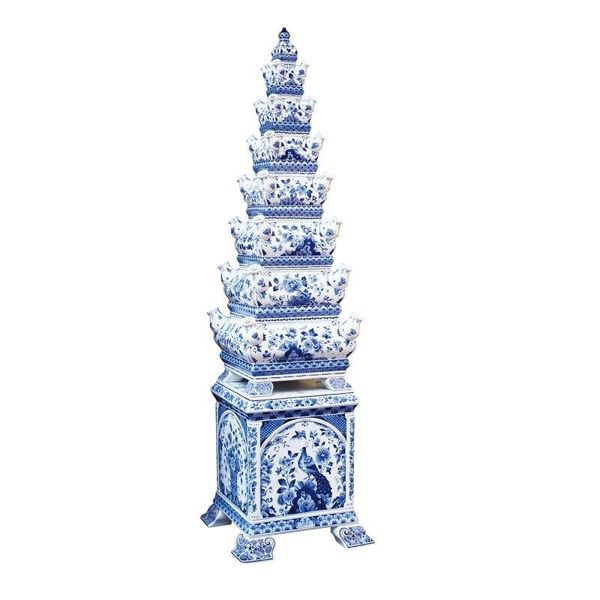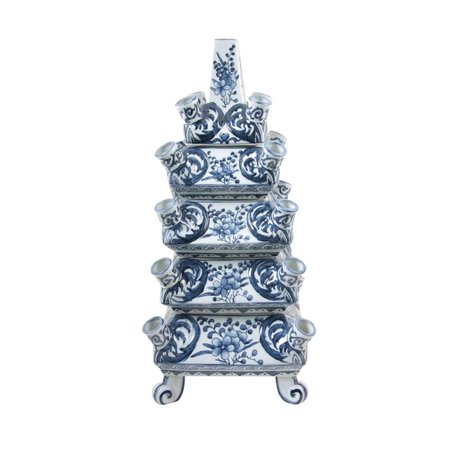Spectacular unique pyramid shaped Tulip vase
Spectacular unique pyramid shaped Tulip vase
- Product description
- Reviews
Though the tulip nowadays is seen as typical Dutch, it is in fact an Asian product. Persians and Turks cultivated the bulbs and it was not before 1560 that they were gradually introduced in Western Europe. They found their way to gardens of scholars, bankers and courtiers through diplomats and merchants. Late sixteenth century the tulip became increasingly popular in The Netherlands and turned into a frequently demanded product, often used for decoration. Trade and speculation followed, which finally reached a climax in the so called ?tulip fever?. The unique and expensive tulip bulbs were placed in even so extraordinary and costly special Delft blue vases ? tulip vases, characterized by the various cylindrical openings to put the flowers in. The popularity of the vases with spouts reached its high-days towards the end of the 17th century. The vases were then produced in all sizes and styles and all were very much in vogue, even with the royals witness the fact that William and Mary, then rulers of both Britain and The Netherlands, ordered the production of four pyramid-shaped flower holders.
| Sizes: | H120 cm |
| Weight: | 16500 gr |
| Technique: | Delft Blue |
| Production type: | Handpainted |





